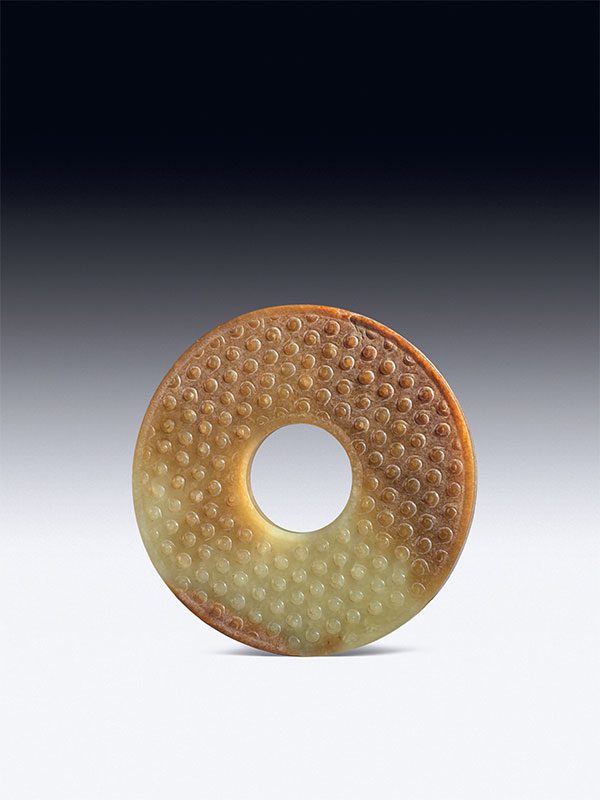Jade bi disc with ‘grain’ pattern
China, late Warring states to early Western Han dynasty, 3rd – 2nd century BC
A jade bi disc of circular form with a round aperture cut in the centre. Around the inner and outer edges of the disc are two plain, raised bands. On both sides, the surface of the jade is carved in relief with a spiral ‘grain’ pattern. The stone is semi-translucent and of yellowish tone, with some brown patches.
In China, a circular jade disc is known as bi. Both origin and purpose of the circular bi disc in early Chinese art remain obscure. What is certain is that the form was popular from early times and that numerous discs have been found in burials, often placed at the feet of the deceased or directly underneath the deceased’s body. The obvious mystical and magical connotations of this practice are not particularly surprising if one considers the special importance the Chinese have always attached to the hard stone. The bi disc is said to be symbolic of Heaven, whereas its counterpart, the cong tube, represents Earth. Bi discs were usually intended for gifts, offerings, rites and sacrifices, especially during the Spring and Autumn period (770 – 475 BC). The pattern of raised dots on a grid, commonly known as ‘rice-grain pattern’ (guwen) first appeared in the 6th century BC,[1] and gradually aligned symmetrically, as can be seen on the present disc.[2] A smaller but comparable bi disc is in the collection of the British Museum.[3] A slightly larger bi disc is illustrated by Rawson.[4]
Provenance:
Spink & Son Ltd, before 1990
Private collection, UK
Exhibited:
The Museum of East Asian Art, Bath, UK from 2001 -2014
- Rawson, J. Chinese Jade – From the Neolithic to the Qing, London 1995, p. 247
- Rawson, J. op. cit. p. 252
- Watson, W. The Arts of China to AD 900, Yale University Press, 1995 p. 59, no. 111
- Rawson, J. op cit. no.15.3, pp. 253-4

